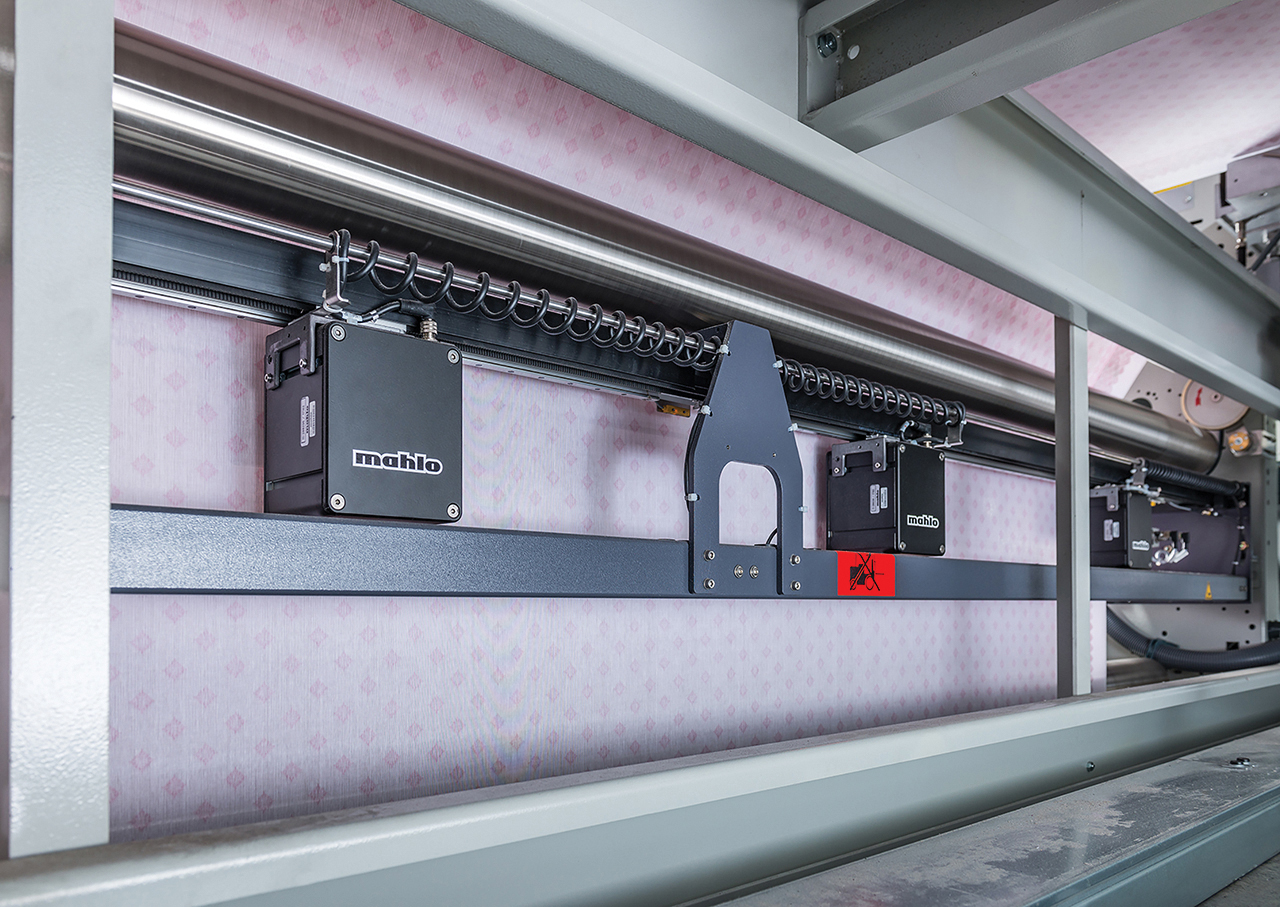With the invention of the first automatic weft straightener, Mahlo GmbH + Co. KG set a milestone in the textile industry. Continuous further development and a high level of innovation, incorporating many years of experience in application technology, resulted in the straightening technology that still defines the standard in the industry today. No other system on the market can detect distortions as precisely as the scanning system of the machine manufacturer from Bavaria, Germany. Even the most complicated weaves, surface structures and patterns are detected fully automatically and reliably. The appropriate measuring principle for the interested customer’s product mix can be selected from a broad portfolio of different scanning technologies and sensors. Mahlo sales manager Thomas Höpfl explains what is behind this.

What are the requirements for distortion detection according to today’s standards?
Thomas Höpfl: “Modern distortion detection must function fully automatically at today’s high fabric speeds without errors, regardless of weave and surface effects, pile, loops or hairs. To ensure this, we at Mahlo have developed a wide variety of spe- cialized sensors. This allows us to select the system according to the customer’s product mix, and not necessarily have to use a specific process, even if it is not the best fit.”
Which measuring principles does Mahlo use?
“The optoelectronic measuring principle developed by Mahlo with an oscillating cylindrical lens is capable of scanning all textile structures for weft thread and stitch course distortion, with a few exceptions. It is the most universally applicable measuring principle. For the few exceptions that cannot be scanned with the optoelectronic sensor, we also offer an imaging, i.e. camera-based, measuring principle as a supplement.
For highest demands both systems can be combined.
If the distortion of a repeating pattern is to be detected, the previously mentioned measuring principles are often not suitable. Therefore, we have developed a system with which we can specifically detect the pattern distortion. For this purpose, we capture the entire fabric width with a line scan camera. The image thus generated is evaluated with specially developed evaluation algorithms. The pattern distortion is determined and simultaneously eliminated with the straightening mechanism.”
Where and how are the sensors best arranged in the straightener?
Several sensors, depending on the application, is installed across the width at the outlet of the straightener. Microprocessors in all sensors supply distortion angle proportional signals simultaneously and continuously. In fractions of a second, the total distortion is calculated, the deviation from the straight weft thread is determined and the necessary control pulses are derived. In this way, distortion changes are detected and controlled in real time. A motorized width adjustment ensures that the sensors are always optimally distributed across the fabric width. Edge sensors detect changes in fabric width and adjust the position of the sensors. Regarding distortion detection on textile webs, Mahlo has clearly decided against scanning with just one traversing sensor. There is only one sensible solution for textile, and that is simultaneous scanning.”
What are the reasons for simultaneous scanning with multiple sensors?
“Most textiles exhibit high distortion dynamics, i.e. frequently changing distortion is to be expected. Therefore, it is important to determine the total distortion across the fabric width more or less in real time. This is only possible if the distortion angle proportional signals can be processed simultaneously by a suitable number of sensors. A traversing sensor would collect these values one after the other during traversing, meaning they would be available with a time delay. The total distortion can only be calculated after one complete traverse at a time.
The maximum speed of the sensor would be limited. In the edge areas, braking must take place before the reversal point. This means that for a width of 3200 mm, a traverse would take 2 seconds or more in any case. Assuming normal fabric speeds of 70 m/min, around 2.5 – 3 m of fabric will run through the leveler unobserved during this time. And thus causes losses for the manufacturer.
The situation is even more critical in the case of knitwear, which often exhibits highly variable distortions. It is precisely then that a fast response is required. To make this possible, the total warpage must be determined continuously, more or less in real time.”

What is Mahlo doing to continue to meet the ever-increasing demands in textile production?
“We are constantly developing our scanning system. We take on board the requirements and suggestions of our customers and, thanks to our vast experience, are able to develop and offer appropriate solutions. Cooperation with leading universities is also an important building block here. An example is the successful project for optimizing the control of skew and bow rollers that we completed in cooperation with the Technical University of Deggendorf. The current controller can adapt automatically to changing influences and fabric parameters such as speed, fabric tension, etc. Using complex algorithms, it can anticipate the future course of warpage with high accuracy. This additionally increases the control speed and almost completely avoids residual distortion outside the specified tolerances.”
Why is this important?
“Distortions that have been detected must be eliminated as quickly as possible and in a process-safe manner. The goal of every straightening machine is to produce the highest possible percentage of goods without distortion. Only by reacting as quickly as possible to the detected distortions does one have a chance of achieving or exceeding the set target.”
Your conclusion?
“The ability at Mahlo to directly compare experiences with traversing and stationary systems has allowed us to clearly expose the weaknesses of traversing for textile fabrics. As the market leader, we therefore continue to rely on simultaneous scanning with multiple sensors to ensure high-quality goods and less waste for our customers.”